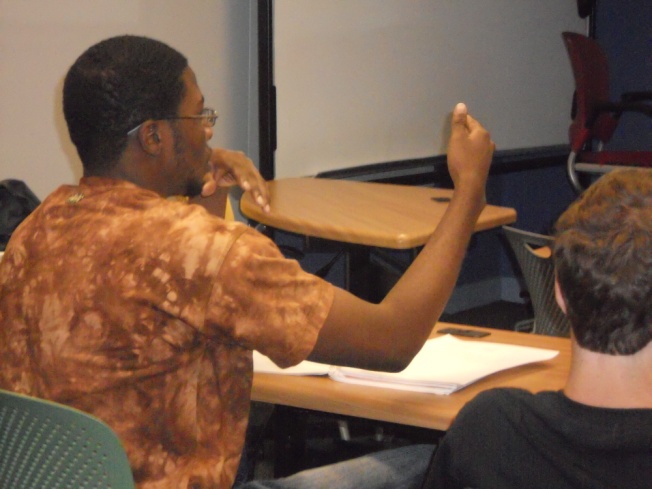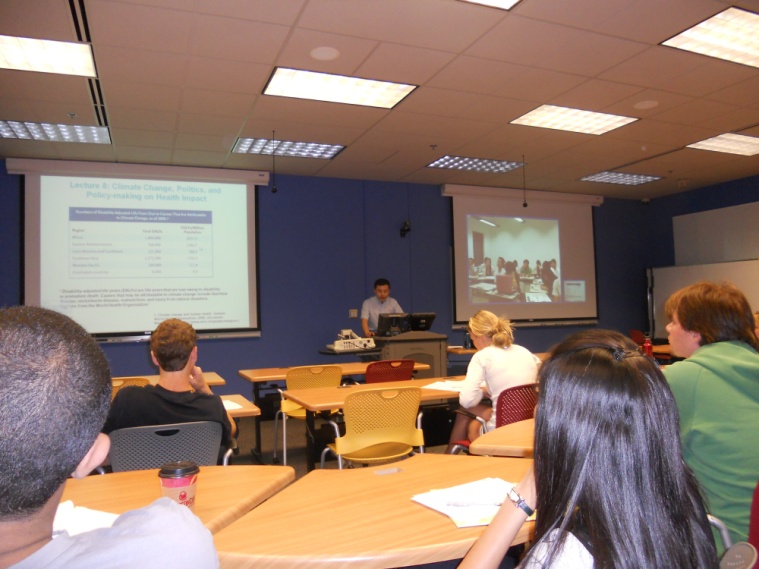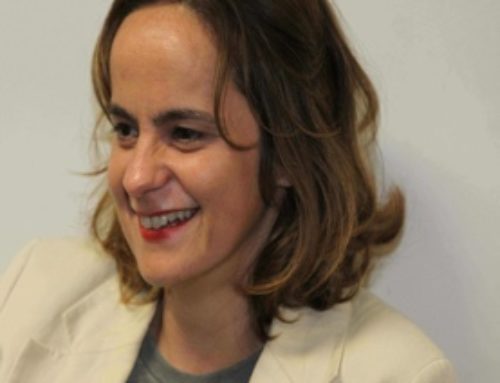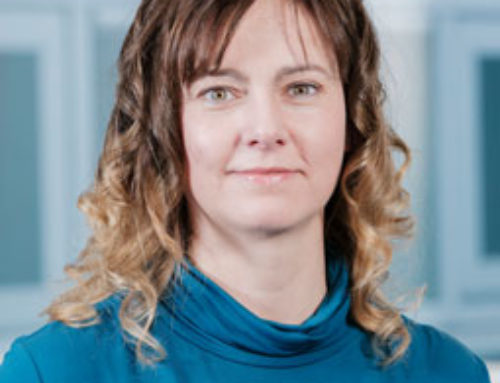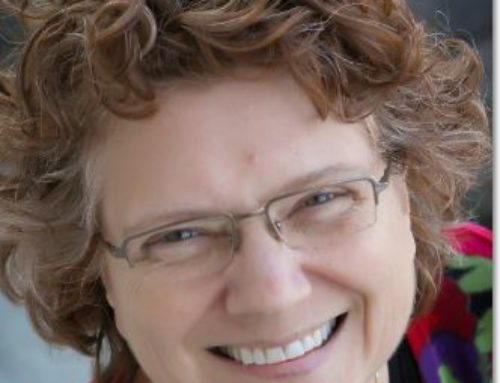HETL Note: We are pleased to present “Frontiers in Higher Education: A Procedural Model” – a feature article by Ruth Sesco. The article describes and discusses in detail an innovative “green” approach to global collaboration in teaching and learning that may be feasible and practical to adopt across of a range of institutions of higher learning and academic programs. Based on her experience and based on multiple successful implementations, the author identifies the advantages of the proposed global collaboration model and critically evaluates its potential benefits. You may submit your own article on the topic or you may submit a “letter to the editor” of less than 500 words (see the Submissions page on this portal for submission requirements).
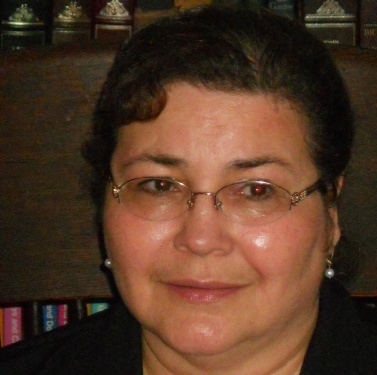 Author’s Bio: Ruth Sesco is a program coordinator in the Ohio State University Libraries (OSUL). She started researching international collaborative coursework in 2006, and her learning process included surveys from instructors who had taught these courses. In 2007 she designed a procedural model for sharing segmented modules of interactive coursework with international partner institutions and piloted it. Later Ruth assisted in developing the Gateway Interactive Seed Module Grant Program that was modeled on her design and facilitated the conversion of selected course content segments into interactive learning experiences at the global level. Ruth served as coordinator of the grant program and assisted instructors in developing their interactive classes. Ruth is also an adjunct faculty member in the Department of Humanities at Columbus State Community College in Columbus, Ohio. She can be reached at [email protected] or [email protected].
Author’s Bio: Ruth Sesco is a program coordinator in the Ohio State University Libraries (OSUL). She started researching international collaborative coursework in 2006, and her learning process included surveys from instructors who had taught these courses. In 2007 she designed a procedural model for sharing segmented modules of interactive coursework with international partner institutions and piloted it. Later Ruth assisted in developing the Gateway Interactive Seed Module Grant Program that was modeled on her design and facilitated the conversion of selected course content segments into interactive learning experiences at the global level. Ruth served as coordinator of the grant program and assisted instructors in developing their interactive classes. Ruth is also an adjunct faculty member in the Department of Humanities at Columbus State Community College in Columbus, Ohio. She can be reached at [email protected] or [email protected].
Patrick Blessinger and Krassie Petrova
~~~~~~~~~~~~~~~~~~~~~~~~~~~
Frontiers in Higher Education: A Procedural Model
Ruth Sesco
Ohio State University, U.S.A.
Abstract
The paper describes a procedural model implemented at Ohio State University that shares similar content and interaction among international partner classes for a short time, usually 3-5 weeks. The model is flexible and adaptive to any discipline at both the graduate and undergraduate levels and includes expertise from both partnering instructors. Technologies are embedded to integrate a variety of structured opportunities for interaction and to utilize different teaching and learning strategies. There is no exchange of credits or funding, and all instructors are individually responsible for grading their own students, thus allowing subject expertise and peer interaction from around the world at no extra personal cost. The model can be implemented to internationalize an entire curriculum to a broad spectrum of learners world-wide with a significantly reduced carbon footprint, at minimal cost, and in direct response to the needs of higher education.
Keywords: Internationalization, modular design, collaboration, intercultural sharing, curriculum development
Introduction
Instructional technologies and today’s techno-communications can enhance the educational focus on the learning/research dimension, but this should go beyond case studies to a more holistic transformation. Caruana (2010) asserts that there is no best practice for internationalization. It is experiential and context specific requiring many uniquely nuanced elements, so it will manifest in different ways depending on the disciplinary perspective. If anchored perspectives from at least two given regions of the world were integrated into the subject content and class activities, courses in every discipline could share and focus on the real world conditions of the consumers/providers (i.e., people and societies of the world). In the process, students would learn how to network and reach across the globe to a variety of different cultures through different subject content, as well as different modes of communication, learning technologies and projects/activities. A highly educated global workforce and more science and engineering scholars would impact the world economy in two very significant ways. First, the acceleration of scientific and technological knowledge would directly impact the economic progress flowing from it, and second, a highly educated global workforce would raise productivity. (Freeman, 2009, p. 399) The outcome is a higher level of world-wide knowledge, competence, readiness, and productivity.
Internationalizing coursework would require students to develop new global competencies. These include mastering the ability to navigate and adapt intercultural attitudes and sensitivities, manage conflict, and relate current affairs and evolving international trends and strategies. Intercultural competency has become an extremely important skill as a result of the cultural diversity manifested in the marketplace. (Spitzberg & Changnon, 2009, p. 337) Developing intercultural competence is also stressed by Paige and Goode (2009) who explain that those who receive such training have more expertise and confidence dealing with cultural issues than those who do not (pp. 333-349). Collaborative coursework can cultivate this broader perspective of both subject content and cultural partners, and thus, better enable students to interact in a global context.
Today, collaborative coursework often utilizes blended formatting, that is both, on-site and as distance learning environments that incorporate both synchronous and asynchronous communications. These blended formats are flexible to varying styles and approaches as well as new information and resources. (Caulfield, 2011, np) For example, many student practice labs interact and respond to industry problems, and medical students often observe live procedures and discuss/respond to them as they happen. These activities are preliminary steps to internships, involve students on joint research projects and disseminate statistics and feedback. Such learning experiences can maximize global synergies by enabling students to collaborate across regions and cultures.
Besides the use of blended learning environments, video conferencing is highly advised for face-to-face spontaneous exchange. This face-to-face exchange has been cited for providing a significant sense of shared humanity that binds together students and teachers. The subtle impact of language usage in tandem with non-verbal behavior, i.e., body gestures, eye contact, and interpersonal etiquette, can be best related through real-time interaction. (Smith, Paige, & Steglitz, 2003, p. 105) This interaction provides an opportunity for students to better understand how a discipline is represented and understood within other cultures. It extends the focus to knowledge created from a different identity and introduces multiple ways to know it. It also shifts the students’ frame of reference beyond the theoretical so they can engage in critical debate in their field. (From Internationalizing the Curriculum Resource Kit).
Internationally collaborative learning has been in practice at many universities for decades. Surveys conducted at OSU in 2006 and 2007 identified numerous instructors at U.S. institutions who found international partners and redesigned traditional courses to align similar content. However, success was problematic due to content incongruities, approval issues, intermittent and/or dropped connections and numerous other technical issues, including high costs, not to mention aligning time zones and institutional schedules. Grants were often required to purchase compatible equipment for video-conferencing or to cover student fees to share a course management system. Many instructors abandoned the effort because it generated frustration and required more work than they had time for. Their most significant problem was lost class time through technology glitches.
Issues such as these have been observed elsewhere and have led to the conclusion that while international collaboration in teaching and learning may be of interest to enthusiasts and researchers it is not yet “a sustainable mode of education” (Clear, 2008, p. 11). However in line with previously reported findings (Clear & Kassabova, 2005) the surveys also showed that according to teachers the interaction provided great benefits to their students. Teachers unanimously agreed that interaction enabled everyone to discover something significant through the process; It motivated students, invigorated class discussions and opened new dimensions of awareness and knowledge, and ultimately improved the student learning experience.
Improving the learning experience will affect how students, employers and society view the experience, product and ultimately, the effectiveness of universities and higher education. According to Kim and Zhu (2010), “The need for higher education has become crucial in the age of globalization, as knowledge-based workforces have become an essential ingredient to acquire and maintain a competitive edge in the marketplace.” Kim and Zhu (2010, p. 165) Today’s technologies, serving as a conduit for higher education, can provide networks for the international integration of education and research and be facilitated to a very broad spectrum of learners world-wide with a reduced carbon footprint, at minimal cost and in direct response to the needs of higher education.
Today’s technologies that are vastly more reliable, versatile and cost effective have made a tremendous impact on our lives, both personally and professionally. Demands of higher education to broaden our existing classrooms into new world-wide opportunities have been equally extended. Study abroad, foreign exchange programs, and a diverse faculty base can broaden awareness, but to effectively serve all students we must adapt the subject content and our methods of teaching to gather and exchange information across the international community. This case study from Ohio State University (OSU) offers a single formula that harnesses both institutional and technological synergies for international interaction across the curriculum
Designing an International Collaboration Model
Since OSU’s Office of International Affairs (OIA) explores and supports many varied dimensions of internationalization, strategies for collaborative cross-border learning came under its consideration. OIA reviewed the survey information and recommendations, and was interested in exploring a practical values-driven approach evolved from the study to enrich course content. Internationalization occurs when multicultural experiences and perspectives are infused into the teaching, discovery, and engagement of our students, and this new model encouraged more structured and interactive opportunities to facilitate such valuable international learning experiences.
A course development grant was followed by a successful pilot class (“Frontiers in Life Sciences Research: Genomics, Proteomics and Bioethics”) coordinated with three institutions in India for five weeks in the spring of 2009 (Simcox, 2009a,b, np). This class shared interactive lectures/discussions, engaged students in group projects and examined case studies that explored ethical issues in the practice of biological research. OIA then provided two years of faculty grants to promote the model utilizing similar course-redesign efforts as those recommended by the National Center for Academic Transformation. NCAT recommends innovative use of technologies and proven methodologies for course redesign such as the modular formatting of content. Modular formatting can be likened to the chapters of a book, thus modular segments can be presented as units of information.
It is difficult to match perfectly aligned classes between universities for an entire semester. There is considerable variance in the subject content and semester alignment, especially if the institutions are in different hemispheres and matching winter courses with summer schedules. Time zones further complicate class scheduling. However, sharing only similar content for a shorter period, perhaps three to five weeks, can facilitate a mutually beneficial learning experience. Mak (2010) clarifies some elemental considerations for multicultural classes in her article and emphasizes that different cultures utilize differing teaching/learning styles. She states that instructors must consider the subject content, course level, class sizes, the proportion of culturally diverse students, and whether it is a theory or practicum session. ( p. 370) Attentiveness to issues such as these must be carefully considered.
An International Business Perspectives class (Bus Tec 294T) at OSU’s Agricultural Technical Institute (ATI) exemplifies such concerns. This class was coordinated with Tamil Nadu Agricultural University (TNAU) in India for six weeks. Each university scheduled four lectures/discussions with their own participants followed by one combined lab session to interact with the instructor and students in the other country. Then the class sessions were substituted with international teleconference sessions once a week. The meeting time was 8:00 am at OSU (corresponding to 5:30 pm in India); the sessions lasted between two and three hours with one scheduled break. Students were assigned to group projects, each group consisting of four students with two from each location. Each group developed a realistic import/export plan between their countries. Instruction and interaction was conducted in English. Language issues were addressed by the Indian instructor, Dr. Chinnadurai, and Dr. Kumarappan, one of the OSU instructors originally from India.
All of this planning required the instructors to meet online months earlier to discuss course curriculum and test the technical communication equipment at their respective campuses. Other critical details included aligning comparable course syllabi, reference books, lectures, an international project plan and student group work requirements. The interactive course module would start with an introduction of students and instructors, formation of the teams, identification of import/export products and discussion of the best modes for communication. The onus is on the instructors to coordinate international business research in their respective campuses. Every week, the students would design a PowerPoint presentation and present it with their team members during the teleconferenced session. The entire class would participate and have an opportunity to comment or provide feedback during each online meeting. Finally, the teams would synthesize their ideas into a feasible business plan. All students would submit their final written project plan to their respective instructor and the groups would present their group plans to the class. The course materials would be maintained and exchanged through the OSU course management system (known as Carmen). Participants from TNAU would become temporary OSU students with guest IDs to provide them access to both Carmen and the OSU library electronic resources. All participants could communicate with OSU librarians through Carmen to find information for their group projects. An OSU-ATI librarian would inform the students about available resources and copyright issues.
Barber (2007) reinforces the importance of creative, experiential learning strategies to engage students, enhance their experiences, and bring about deep learning outcomes (pp. 143-149). Also, Hole and Larsen (2007 ) define the students as a learning community through which experiential learning is “…integrated in complex practices, and emerges during a fusion of practice experiences, theoretical knowledge and discussions among peer-students and supervisors.” The business class provides an excellent opportunity for such experiential learning. The projects simulate an international business partnership that requires students to give and receive feedback across their international communities. Each team creates an import/export plan for an agricultural product and analyzes the domestic supply chains in the U.S. and India. They evaluate and choose a distribution channel (e. g., research regulations) and determine the profitability. Completion of the project requires cross-cultural learning from international peers.
Also of note, Wade, Cameron, Morgan and Williams (2011) found that students in such small group learning communities reported a greater need for personal and supportive relationships with their distance members than with their on-campus members. However, this phenomenon depends on each individual’s personality, their level of participation, willingness to engage and interact, and on the time available. (p. 393) This phenomenon may be impacting the business class project teams since each is a small community of learners interacting over a 6 week period through cross-cultural learning. It mimics a realistic situation that agricultural business students may face someday requiring interpersonal relationships at the international level. These learning experiences can sometimes be transformational and can be facilitated in a variety of ways, such as through evolving rational insight and discernment, extra-rational processes that are more psycho-social or ethno-relative in nature, or through small groups that learn collectively. (Wallace, 2012, np) Overall, it is by fostering a talent for synthesizing ideas and creative problem-solving, as well as networking, collaboration and partnerships that students can become multidimensional leaders (Kapur, 2010, pp. 305-334).
OSU participants generally provide ongoing feedback after personal reflection and through group discussions and have cited the interactive projects and class activities as significant factors in the overall success of their classes. Some students expressed a change of focus in their careers and/or a desire to extend their education because of their class experiences. The partnering instructors are best qualified to develop these unique learning activities because they are most aware of the academic needs of both groups of students and are responsible for leveraging the cultural diversity and subject content between them. The creativity of the technology consultants is equally critical as they must adjust/align the modes and synergies to facilitate effective interaction. However, departmental support, class reserve materials and other pertinent resources should be provided. Associated services and administration are essential for collaborative initiatives to be configured, implemented and managed as seamlessly as possible.
World Class Education by Way of Academic Free-trade
The procedural model is flexible and adaptive to any discipline and includes the expertise from at least the two partnering instructors, though experts from business, industry and professional organizations can be included. Most importantly, it allows students to interact directly with international peers in the same area of study. For instance, Sub-Saharan African students could study with a class from Israel and share cutting edge techniques in irrigation and crop science. American students could study off-shore oil drilling with a Brazilian class. Colombian students could learn about farm fisheries with China where the industry is one of the most advanced in the world. They could discuss unique problems at their different locations and share information to develop and advance methods.
OSU’s exploration thus far indicates that this procedural model has the potential to facilitate an exchange of world knowledge and political/economical/cultural awareness in any subject. Currently at OSU, a Dance in Popular Cultures class, an Adolescent Psychology class and a Women’s Studies class are considering multiple partners either simultaneously or in rotation. Even with the additional challenges, these traditional classes require only minor variations and minimal costs to adapt. By sharing only similar segments instead of entire courses they have eliminated many hours of work coordinating content and semesters that simply were not aligned with one another.
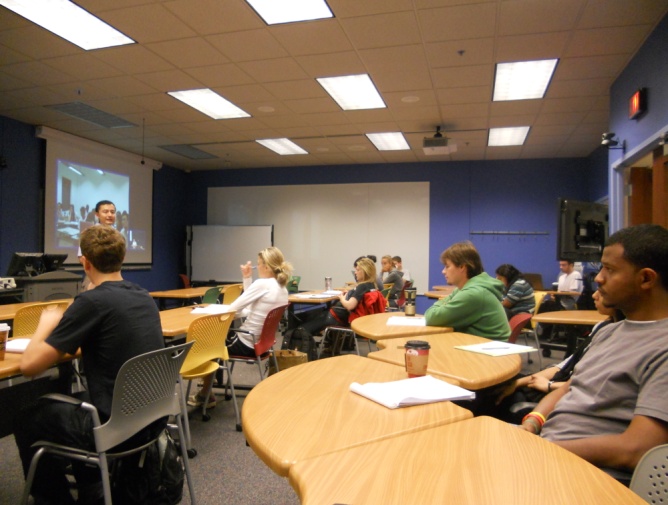
Figure 2. Dr. Sun introduces his Ohio State University, U.S., students to their partner class at DMU, China
Partners are chosen to complement each other’s teaching and research strengths and must agree upon the course content they would share and the type of class activities/projects included. If the initial partnership works well it could be extended to enhance mutual interests. For example, in 2010, an upper-level undergraduate class entitled, “Climate Change and Human Health,” was coordinated with Dalian Medical University (DMU) in China. The impact of this class was transformational in that it inspired students from both institutions to change their majors and focus on study in public health.
Two OSU students approached their instructor stating that they planned to apply for graduate study in the OSU College of Public Health. Three DMU students also wanted to pursue graduate study at OSU (two in the Division of Environmental Health Sciences and one in the Division of Biostatistics), and several others expressed a desire to explore similar possibilities. A teaching assistant from DMU who participated in that first shared class is currently working in a lab for Dr. Sun, the OSU instructor, and is applying for the PhD program at OSU.
This shared course has continued and is currently coordinating with four Chinese institutions simultaneously. The president of DMU recommended that this course serve as a model to develop similar courses and others are under consideration. The DMU College of Public Health, was declared a “Sister College” to the OSU College. DMU is a nationally recognized comprehensive university with Bachelor, Master, and PhD programs and includes fourteen colleges, four directly affiliated organizations and five affiliated hospitals; it serves as a strong partner institution to OSU’s programs.
A delegation from DMU visited the OSU campus and a Memorandum of Understanding (MOU) for collaborative projects was established. The two institutions jointly applied for research grants to support the programs in Public Health at DMU which has resulted in the development of the Sino-US Environmental Research Center at DMU. Also being discussed is a dual degree program between the Bachelor and Master programs, a dual graduate training/research program, and a visiting/exchange faculty and student scholar program.
A visiting scholar from DMU has since conducted research at OSU on the effects of air pollution on diabetes and obesity. Another OSU project funded by the Diabetes Action Research and Education Foundation (USA) was subcontracted to Prof. Min Chen at DMU for a collaborative project, and an OSU visiting scholar is currently extending his visit at DMU where he not only teaches English, but is testing the essentiality of M. smegmatis murA gene (MSMEG_4932) as the first step towards studying the disease mechanism at the molecular level. DMU is currently planning multiple scholarships for OSU graduate students, especially those in the College of Public Health Master’s program to study, conduct research, or gain scientific experience at DMU. Other shared courses have inspired similar interests among students, faculty and departments. Basically, these classes can serve as a portal through which other institutional objectives can be developed and expanded.
Though OSU coordinates projects and classes all over the world, this project, which involves about a dozen classes (See Appendix A for subject areas and partner institutions), originally coordinated with the OSU “gateway” countries of India, Brazil and China. However, other countries are now being included. There is no exchange of credits or funding. The instructors are responsible for grading their own students. Most importantly, the students acquire subject expertise from around the world at no extra personal cost. It does require a coordinator to locate a similar international class with a cooperating instructor and administrative approval from both institutions. Some partnerships require a formal MOU. Campus information technology (IT) services determine technological compatibility and tools for collaboration, but there are many low-cost options available. Other institutional services are needed to schedule video conferencing, arrange access to class resources and the same course management system, and to address any unexpected issues created by such unique situations. With appropriate services in place the follow-through can be timely, effective and without excess burden to faculty. OSU’s instructors have been enthusiastic, so the current collaborative course modules will be ongoing. However, proving its effectiveness is only the beginning. Internationalizing the entire curriculum is another issue.
Concluding Remarks
Today, internationalizing curricula is often viewed as a goal to improve the quality of higher education and a key tool in bringing us closer to internationally recognized diplomas. Internationalizing coursework could also facilitate developing countries in becoming international players in the global sector of higher education. Shared coursework could contribute to their wealth through technology transfer and knowledge accumulation, as well as raise the economic and social status of their graduates. Some developing countries might possibly evolve into knowledge-centers or cyber-hubs even if only at certificate levels or in specialized fields. Internationalizing higher education could potentially resolve brain-drain issues too, but this is all speculative. The most significant and immediate need for internationalizing curricula is to inspire and share new knowledge and research among the global community of learners, and to better prepare them for jobs in a global economy.
However, this requirement of including international cooperation as the social norm in classrooms brings new challenges to higher education. The learning environment must be adjusted to share classrooms with diverse cultures and institutions. This will require more wired classrooms with cutting-edge technologies. Inter-class discussions, brain-storming lab sessions, collaborative projects, papers, and other shared activities must be uniquely designed to best address the numerous variables such as class size, language differences, diverse resources and so forth. This may require more IT assistants and resource specialists/librarians. The length of the collaborative segment is determined by the partnering instructors, and should be integrated into traditional classes as modular, short-term enhancements without imposing too greatly on the instructors’ time.
Class scheduling would also be impacted. Time zone differences could make scheduling real-time interaction difficult. Since the collaborative modules only impact a short period of time, adjustments may be managed through unorthodox scheduling of lab sessions or class meeting times. At OSU it has proven to be easier than expected. Creative scheduling could place synchronous lab sessions in the evenings or weekends for the collaborative segment. For classes addressing a 10+ hour time difference, sessions are often scheduled from 8-10 am/6-10 pm. Scheduling wired classrooms to accommodate as many different class segments as possible in each department may resolve some problems. Traditional classrooms could also be adapted by mounting the necessary equipment to a mobile cart for easy transport. Institutional scheduling constraints determine the choices available, and of course, smaller groups are generally easier to manage. Attention to detail is essential for the collaboration to be most effective but the end result is an inexpensive and effective way to internationalize a curriculum. This type of interaction is not ideal for every class (group piano, for instance), but every department offers some coursework that could benefit from it.
Designing a few internationally shared classes and incorporating them into the curriculum has been done at numerous institutions, but creating a flexible and effective institutional process to internationalize a significant portion of the curriculum is a tremendous challenge. It would require the synergistic coordination of numerous processes, departments, programs, and goals. Success would be predicated on the investment.
Internationalizing curricula would require instructors and university systems to continuously explore new tools, services, and methodologies. Without full commitment, integration could fall short. For example, many OSU instructors generating large funds through grant work and research already manage demanding work-loads and may not choose to participate, and junior faculty may not be advised to develop international partnerships if it is not required for promotion and tenure. How many classes – student learning experiences – could this impact? Universities are complex entities, and there are many ways in which integration could impact other programs and goals. Surviving the highly competitive environment of higher education could be problematic in ways too complicated to predict.
Also, this model is just one formula to share world knowledge. Universities must forge a variety of ways to gather and exchange global information. Ultimately, changing the learning experience will change the effectiveness of higher education. It will evolve as ongoing creative exploration that integrates resources and adaptive methodologies through cutting-edge technologies, and it will require judicious input and evaluation, as well as critical support from the governing bodies that ultimately control the building blocks. Technology is providing the tools, but they must be implemented to yield the greatest benefits. Higher education must effectively gather, exchange and cultivate information and the methods of education and research to maximize the synergies among programs around the world. This will empower students to work and function in our ever-expanding world of knowledge, which is higher education’s new world frontier.
Acknowledgements
I gratefully acknowledge Dr. Dieter Wanner, Associate Provost in the Office of International Affairs, for his ongoing support. Grateful acknowledgement is also extended to the participating OSU instructors (listed in Appendix A).
References
Barber, M. (2007). Reassessing pedagogy in a fast forward age. International Journal of Learning, 13(9), 143-149.
Caruana, V. (2010). Internationalizing the curriculum: an annotated bibliography. Leeds Metropolitan University. Retrieved from http://www.leedsmet.ac.uk/
Caulfield, J. (2011). How to design and teach a hybrid course: achieving student-centered learning through blended classroom, online and experiential activities. Sterling, Va.: Stylus Publications.
Clear, T. (2008). Global collaboration in course delivery: Are we there yet? SIGCSE Bulletin, 40(2), 11-12.
Clear, T., & Kassabova, D. (2005). Motivational patterns in virtual team collaboration. In A. Young & D. Tolhurst (Eds.), Proceedings of the Conferences in Research and Practice in Information Technology (42, pp. 51-58). Retrieved from http://crpit.com/confpapers/CRPITV42Clear.pdf
Freeman, R. (2009). What does global expansion mean for the US? National Bureau of Economic Research, Working Paper 14692, pp. 373-404. Retrieved from http://www.nber.org/papers/w14962
Green, A. (1995). Let them show us the way: fostering independent learning in the elementary classroom. Peguis Publishes, Limited.
Hole, G.O., & Larsen, A.K. (2007). VIRCLASS: The virtual classroom for social work in Europe – a toolkit for innovation? EuroDL. Retrieved from http://www.eurodl.org/materials/contrib/2007/Hole_Larsen.htm)
Internationalizing the curriculum resource kit. (n.d.) Oxford Brookes University. Retrieved from http://www.brookes.ac.uk/services/cci/resource-kit/
Kapur, D. (2010). Indian higher education. In C.T. Clotfelter. (Ed.), American universities in a global market. National Bureau of Economic Research conference Report, 305-334. National Bureau of Economic Research, IL: The University of Chicago Press.
Kim, E.H., & Zhu, M. (2010). Universities as firms: The case of US overseas programs. In C.T.
Mak, A. (2010). Enhancing academics’ capability to engage multicultural classes and internationalize at home. International Journal of Teaching and Learning in Higher Education, 22(3), 365-373.
The National Center for Academic Transformation. (2012) Retrieved from http://thencat.org/
Paige, R.M., & Goode, M.L. (2009). Cultural mentoring: International education professionals and the development of intercultural competence. In D.K. Deardorff (Ed.), The Sage handbook of intercultural Competence, 333-349. Thousand Oakes, CA: Sage Publications, Inc.
Simcox, A. (2009a). Biochemistry & molecular genetics 694. Frontiers in life Science Research. Retrieved from http://frontiers.biosci.ohio-state.edu/
Simcox, A. (2009b). Genetics and genomics around the world. Blogspot.com. Retrieved from http://geneticsandgenomicsaroundtheworld.blogspot.com
Smith, S.L., Paige, R.M., and Steglitz, I. (2003). Theoretical foundations of intercultural training and applications to the teaching of culture. In D.L. Lange and R.M. Paige (Eds.), Culture as the Core: Perspectives on Culture in Second Language Learning. Research in Second Language Learning, 89-125. Greenwich, CT: Information Age Publishing.
Spitzberg, B.H., & Changnon, G. (2009). Conceptualizing intercultural competence. In D.K. Deardorff (Ed.), The Sage handbook of intercultural competence, 2-52. Thousand Oakes, CA: Sage Publications, Inc.
Teekens, H. (2003). The requirement to develop specific skills for teaching in an intercultural setting. Journal of Studies in International Education, 7(1), 108-119.
Wade, C.E., Cameron, B.A., Morgan, K., and Williams, K.C. (2011). Are interpersonal relationships necessary for developing trust in online group projects? Distance Education, 32(3), 383-396.
Wallace, S. (2012). Transformative learning theory. Retrieved from http://transformativelearningtheory.com/index.html
Appendix A.
OSU’s collaborative class instructors, subject areas and partner institutions.
This is not a comprehensive list of internationally collaborative coursework at OSU; only work related to or evolved from my research is included.
Dr. Larry Brown, Agricultural Engineering: Coordinated with the University of Agricultural Sciences, Raichur, Karnataka, India
Dr. Wondwossen Gebreyes, Veterinary Medicine: Coordinated with the Universidade Federal de Goias, Goias, Brazil
Carolina Gill, Industrial, Interior and Visual Communication Design: Coordinated with Northumbria University, Newcastle, UK
Dr. Venkat Gopalan, Biochemistry, Dr. Amanda Simcox, Molecular Genetics, Dr. Daniel Farrell, Philosophy. : Coordinated with Anna University, Chennai, India, the Institute of Life Sciences, Hyderabad, India, and Osmania University, Hyderabad, India
Dr. Kazimirez Slomcznski, Sociology: Coordinated with Renmin University, Beijing, China
Dr. Subbu Kumarappan and Kimberly Hostetler, Arts, Science and Business: Coordinated with Tamil Nadu Agricultural University, Coimbatore, India
Dr. Brian Lower, School of Environmental and Natural Resources: Coordinated with the Universidade Federal de Pernambuco, Recife, Brazil
Dr. Rajiv Ramnath, Computer Science Engineering: Coordinated with the Indian Institute of Technology Bombay, Mumbai, India
Dr. Judy Ridgway, Biology: Coordinated with Osmania University, Hyderabad, India, and Prudence International School, Pune Area, India
Dr. Tracey Stuckey-Mickell, Educational Policy and Leadership: Coordinated with the University of Puerto Rico, Mayaguez, Puerto Rico
Dr. Qinghua Sun, Environmental Health Science: Coordinated with Dalian Medical University, Dalian, Liaoning, China
Suggested Citation:
Sesco, R. (2012). Frontiers in Higher Education: A Procedural Model. The International HETL Review. Volume 2, Article 6, https://www.hetl.org/feature-articles/frontiers-in-higher-education-a-procedural-model
Copyright © [2012] Ruth Sesco
The author(s) assert their right to be named as the sole author(s) of this article and the right to be granted copyright privileges related to the article without infringing on any third-party rights including copyright. The author(s) retain their intellectual property rights related to the article. The author(s) assign to HETL Portal and to educational non-profit institutions a non-exclusive license to use this article for personal use and in courses of instruction provided that the article is used in full and this copyright statement is reproduced. The author(s) also grant a non-exclusive license to HETL Portal to publish this article in full on the World Wide Web (prime sites and mirrors) and in electronic and/or printed form within the HETL Review. Any other usage is prohibited without the express permission of the author(s).
Disclaimer
Opinions expressed in this article are those of the author, and as such do not necessarily represent the position(s) of other professionals or any institutions


